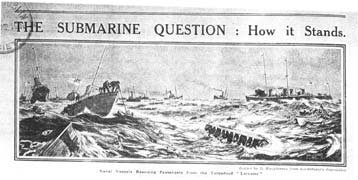| |
How the sinking of the RMS Leinster jeopardized peace talks.
 |
| U.S. President Woodrow Wilson |
-
6 October 1918: U.S. President Woodrow Wilson received the following
message from Germany: "The German Government requests the
President of the United States to arrange the immediate conclusion
of an armistice on land, by sea and in the air."
-
10 October 1918: German submarine UB-123 torpedoed the RMS
Leinster in the Irish Sea. Official death toll 501.
-
14 October U.S. President Woodrow Wilson replies to the German Government
saying, among other things, that there can be no peace as long as
Germany attacks passenger ships.
-
21 October 1918: Reinhard Scheer, Admiral of the German High Seas
Fleet, signalled his submarines: "To all U-boats: Commence
return from patrol at once. Because of ongoing negotiations any hostile
actions against merchant vessels prohibited. Returning U-boats are
allowed to attack warships only in daylight. End of message. Admiral."
-
11 November 1918: Armistice signed between the warring powers. End
of First World War.
-
For a few days in October 1918 the sinking of the RMS Leinster threatened the possibility of peace talks to end the First World War.
 |
| Naval vessels rescuing passengers from the torpedoed RMS Leinster. |
Continue reading Why was the RMS Leinster forgotten?...
 |
|





